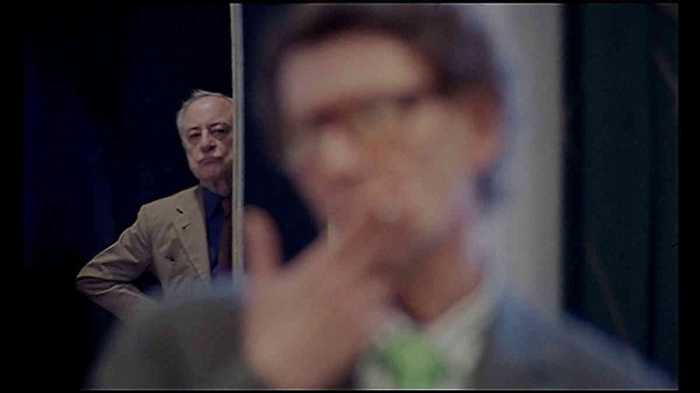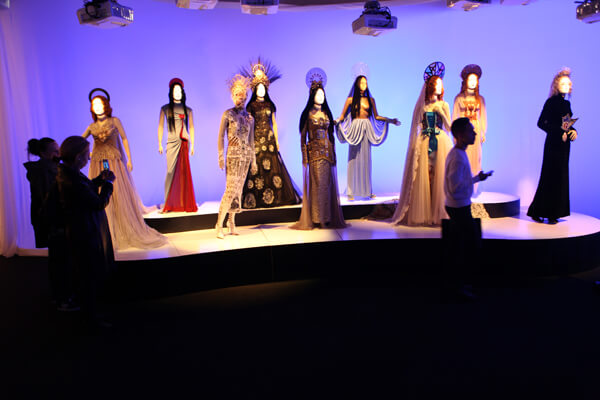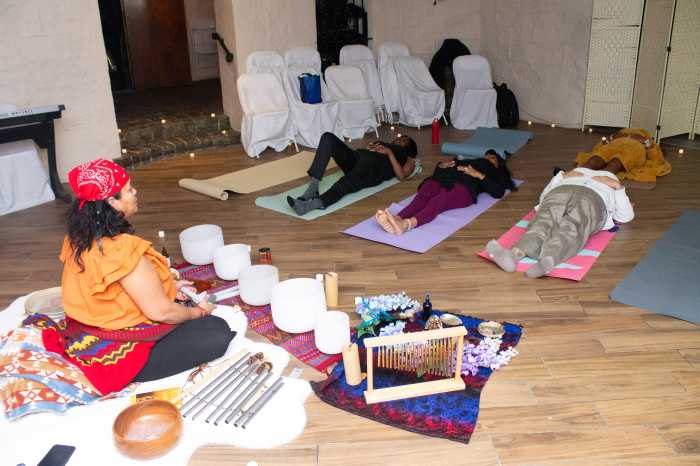“Kaiser” Karl-Otto Lagerfeld, as he was known, the biggest name in fashion for half a century, died February 19 at the age of 85.
In terms of fashion influence, there was Yves Saint Laurent with his game-changing innovations, even Calvin Klein and Ralph Lauren, whose fabrics somehow became intrinsically woven into the fabric of people’s lives the world over. A contemporary of Saint Laurent’s, whom he outlived, Lagerfeld was already an established eminence in the business before either of the latter two. And he kept on working until the day he died, at the top of his game.
He designed a staggering 14 collections a year for various labels, including his own eponymous one, Fendi since 1967, and, most prominently, Chanel, which he took over in 1982, turning a dowdy, faded house known for dressing wealthy matrons into a $4 billion juggernaut. Nobody had the overwhelming world reach he possessed and for such an impressive length of time. In matters of style, for decades, he was simply “da Man,” and I will never forget the MTV Awards at which TLC’s late Lisa “Left Eye” Lopes referred to him as “da Bomb.” If nothing else, this man made sure he stayed relevant to every generation of women, with a claw-like tenacity.
If all that seems an excessive appraisal, rest assured it is truly apropos. Besides his leaving an estate worth some $200 million, Lagerfeld was a legendary alpha among designers. During one Fashion Week in Paris, I was sitting in the ever-popular Café de Flore when I saw Pierre Bergé, head of rival house Yves Saint Laurent and that late designer’s former lover, enter, whereupon the maître d’ whispered something in his ear. Bergé promptly left. When I wondered why, a knowing friend told me, “That’s because Karl is here. Bergé will wait in his car until he sees him leave and only then will he come back.” Sure enough, not long after, Lagerfeld left with his twittering entourage, and after a moment or two Berge returned to make his own kingly entrance. That enmity had roots in a decadent dead lover of Lagerfeld’s, who simultaneously took up with Saint Laurent, dragging him, in Bergé’s view, into a world of drugs and gay S&M. Berge always blamed Lagerfeld for instigating this to bring down the house of Yves, and no further words were ever exchanged between them.
I always preferred the far more versatile, ever-evolving, and hip designs of Lagerfeld to Saint Laurent, from Karl’s early days at Chloé when his still timeless pieces there had a sensuality, essential légère, and downright prettiness, which to me the heavier hand of Yves often lacked.
Lagerfeld was born on September 10, 1933, in Hamburg, to a wealthy businessman father and a deeply adored, strict, and strictly chic mother, who remained the biggest influence in his life. Precocious, to put it mildly, from an early age, he fled to Paris in his teens, where, without any real formal pertinent education or experience, he entered fashion by winning a 1954 fashion competition for his coats, along with fellow victor Saint Laurent, who would become something of a frenemy cum bête-noire to him. He apprenticed at the prestigious houses of Balmain and Patou before going freelance in ready-to-wear, which by the 1960s was beginning to challenge haute couture’s influence at setting styles.
At the house of Chloé first and then Fendi, he really made his name, doing covetable, hyper-feminine, and fun pieces for the former, and revolutionizing the fur business for the latter, with his bold combining of different pelt breeds (like the more lowly squirrel, mole, and rabbit with mink) and startling cuts, to dazzling never-before-seen effect.
Many critics say that Lagerfeld never truly invented a fashion, like Chanel’s trademark suit, Schiaparelli’s knitwear and shoulder pads, or Saint Laurent’s “smoking” (tuxedo for women) and safari looks. But, while it remains true that — like his younger, brilliant American apostle, Marc Jacobs — he was mostly a master at editing the ideas of others or from the past into the most strikingly chic cut-and-sew jobs, with fur he was a real pioneer.
Freelancing ended when he took over Chanel, and the rest is fashion history, via his canny interpretations of the venerable house’s It-suits and brandable interlocking C’s, pearls, and gardenia motifs that became so-hip must-haves for everyone from millionairesses to movie stars to the youngest hip hop sensations. (It was announced that Virginie Viard will take over as house head designer.)
Even with his killer designing schedule, which he embraced while rivals half his age crumbled under less pressure, this most driven of workaholics found time to pursue interests in photography (much better than his mediocre drawing), often shooting Chanel’s ad campaigns and doing work for magazines like Visionaire, publishing — having founded his own imprint — and book-writing, like 2002’s “The Karl Lagerfeld Diet” detailing how he had lost 92 pounds. It was then that he whittled his husky Teutonic frame, draped in baggy Comme des Garcons suits, into a skeletal model size, encased in more rock ‘n’ roll trappings of black jeans and leather, foppishly tailored shirts, a king’s ransom in Chrome Hearts jewelry, ponytail, and those ubiquitous dark glasses.
He was gay and never made a secret of it, but really had only one great male love in his life, the by-all-accounts devastating, drug and S&M-addicted playboy Jacques de Bascher (the one who also hypnotized Saint Laurent), dead of AIDS at age 38 in 1989, whose ashes were forever kept by Lagerfeld in a secret place, along with his mother’s.
“I infinitely loved that boy but I had no physical contact with him,” he once said, seeking, like Andy Warhol, to maintain a mysterious asexual persona seemingly above mere human desire. In fact, both men actually pursued sex avidly, with Lagerfeld being a notorious frequenter of the cruisy Tuileries Garden after dark, an unmistakable, unashamed, somewhat vampiric presence according to numerous eye-witnesses.
If there was any other big romance in his life, that would have to be his white Birman cat, Choupette, who was given to this never-big-on-animals designer in 2012. He named her in his will, although she has already earned some $3 million through advertising work, with a social media following of 200,000. She enjoyed four prepared meals a day, including one made of king crab, smoked salmon, and caviar, and basically symbolizes the Bourbon excess of Lagerfeld’s personal life and the fashion world, that beautiful poison, in general.
As with many brilliantly successful, out-sized personalities, especially in fashion, he was not always an easy person to be with, being a Diet Coke-addicted control freak and occasional pot-stirrer, as when he once offered a fabulously rare vintage designer gown as a gift to whoever grabbed it first, tossing it directly between two of his dearest fashionista friends, Paloma Picasso and Italian Vogue editor Anna Piaggi. He could passionately take up people (as he did various styles of furniture — Italian Memphis, Art Deco, rococo for his numerous houses) and then drop them completely to move on to something new. He ruthlessly cut off his favorite model, the striking Inès de la Fressange, who was virtually the house muse of Chanel, not to mention the definitive French woman to the world, when she was chosen as the model for Marianne, France’s symbol of their Revolution, replacing Brigitte Bardot. Was it old royalist loyalties, pure jealous ego, or what that made him declare that Marianne was the embodiment “of everything that is boring, bourgeois, and provincial” and that he would not dress up historic monuments?
And politically he could be a big old mess, always voluble with his somewhat nerve-wracking, rapid-fire speech, which could raise eyebrows with certain views, even bearing in mind his advanced age and the times that must have shaped them. Right after his death, a Twitter fight broke out between a favorite Lagerfeld model and friend, Cara Delevingne, who posted a loving tribute to him, and actress Jameela Jamil, who reacted to that, citing an article written by Lara Witt that called out Lagerfeld for being an “Islamophobic, racist, misogynistic, fatphobic rape apologist.” Sharing that article Jamil wrote, “I’m glad somebody said it. Even if it is a little soon. A ruthless, fat-phobic misogynist shouldn’t be posted all over the Internet as a saint gone-too-soon. Talented for sure, but not the best person.”
Difficult, elitist, and entitled, definitely, but, yes, undeniably talented. Lagerfeld said he wished to die while working, like Chanel herself did, herself. His final collections were stunning, particularly his jaw-dropping 2018-19 Egyptian-themed “Metiers d’art” show held in the Metropolitan Museum of Art’s Temple of Dendur. It is indeed rare for anyone in their 80s to deliver work that is the equal to if not better than anything they’ve ever done before, and, in this light, Karl Lagerfeld could be accurately described as the Verdi of Fashion.




































